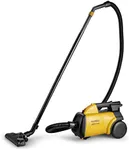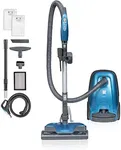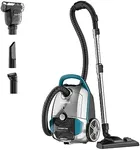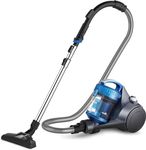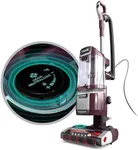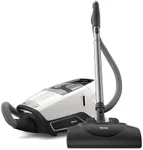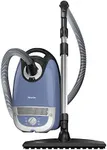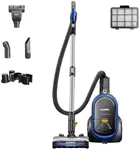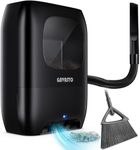Buying Guide for the Best Pet Canister Vacuum
Choosing the right pet canister vacuum is essential for maintaining a clean home, especially if you have furry friends. Pet hair, dander, and dirt can accumulate quickly, and a good vacuum can make all the difference. When selecting a pet canister vacuum, consider the following key specifications to ensure you get the best fit for your needs.Suction PowerSuction power is the measure of how effectively a vacuum can pick up dirt and debris. This is particularly important for pet owners because pet hair can be stubborn and difficult to remove from carpets and upholstery. Suction power is usually measured in watts or air watts. Higher suction power means better cleaning performance. For homes with multiple pets or heavy shedders, a vacuum with high suction power is recommended. For lighter cleaning needs, moderate suction power may suffice.
Filtration SystemThe filtration system in a vacuum is crucial for trapping dust, allergens, and pet dander. HEPA (High-Efficiency Particulate Air) filters are the gold standard, capturing 99.97% of particles as small as 0.3 microns. This is especially important for households with allergy sufferers. If allergies are a concern, opt for a vacuum with a HEPA filter. For general cleaning, a standard filter may be adequate, but it won't capture as many fine particles.
Brush RollThe brush roll, or beater bar, is the part of the vacuum that agitates carpet fibers to lift dirt and pet hair. Some vacuums come with specialized pet hair brush rolls designed to prevent tangling and improve hair pickup. If you have carpets or rugs, a vacuum with a powerful brush roll is essential. For homes with mostly hard floors, a vacuum with a switchable brush roll or one designed for hard floors may be more suitable.
CapacityThe capacity of a vacuum refers to the size of its dustbin or bag. Larger capacities mean less frequent emptying, which can be convenient for busy households or those with multiple pets. Canister vacuums typically have larger capacities than upright models. If you have a large home or multiple pets, look for a vacuum with a larger capacity. For smaller homes or single-pet households, a smaller capacity may be sufficient.
Weight and ManeuverabilityWeight and maneuverability are important factors, especially if you have a multi-story home or need to carry the vacuum up and down stairs. Lighter vacuums are easier to move around and can reduce strain during cleaning. Canister vacuums are generally more maneuverable than upright models. If you have a large or multi-story home, consider a lightweight and easily maneuverable vacuum. For smaller spaces, weight may be less of a concern.
Noise LevelThe noise level of a vacuum can be a significant factor, especially if you have pets that are sensitive to loud sounds. Noise levels are measured in decibels (dB). Quieter vacuums typically produce less than 70 dB, while louder models can exceed 80 dB. If your pets are easily frightened or you prefer a quieter cleaning experience, look for a vacuum with a lower noise level. For those less concerned about noise, this may be a less critical factor.
Attachments and AccessoriesAttachments and accessories can enhance the versatility of your vacuum. Common pet-specific attachments include motorized pet hair tools, crevice tools, and upholstery brushes. These can help you clean various surfaces and hard-to-reach areas more effectively. If you have a variety of surfaces to clean or specific areas where pet hair accumulates, look for a vacuum with a good selection of attachments. For more straightforward cleaning needs, fewer attachments may be necessary.
